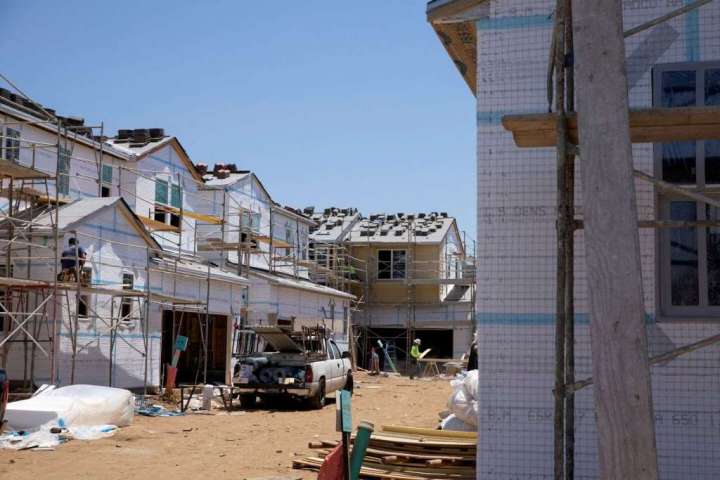Worldwide price inflation negatively affects almost everything, including real estate and housing. Home building, home sales and ownership, development of multifamily housing, and development of office building projects rentals are all suffering and will continue suffering. In particular rising interest rates have made buying or leasing a place to live less affordable and out of reach for many.
How to overcome challenges the housing world is facing now

Today’s worsening economic situation is blamed on Russia and the war in Ukraine, worldwide oil supply shortages, limited oil refinery capacity, supply line delays and profiteering. Whatever the causes, a self-sustaining, economic vicious cycle exists: Price inflation continues; consumer confidence and spending decrease; unemployment rises; and economic circumstances become still worse.
For real estate, additional factors add to these challenges. The coronavirus pandemic, coupled with technology, have changed citizen and business behaviors, making real estate market forecasting difficult.
In the nation’s capital, tens of thousands of federal and nonfederal workers, whether by necessity or personal choice, continue working at home. With fewer weekday workers in office buildings, much street-level, retail real estate is vacant and marginally viable for stores, restaurants and other commercial activities that animate life in urban streets and around civic spaces. Consequently millions of square feet of D.C. office and retail real estate, even if still leased, remain underutilized or unoccupied.
Will the office market ever get back to what it was pre-pandemic? No one really knows for sure. But it’s certain that a shrinking economy coupled with partial occupancy conditions will have an impact on future real estate values, prospective investment and property utilization.
Often talked about is the need to repurpose existing, underutilized office and other commercial buildings, especially older ones, by converting them to residential use. But this is no panacea. Such conversions are also very challenging. They entail not only coping with the same adverse economic conditions facing all real estate, but also overcoming regulatory and constructional obstacles that can make conversion difficult and costly.
Given ongoing economic distress, is there anything at all that could be done to address real estate problems and especially housing challenges?
In the short run, options are limited. But taking a longer view, states, counties and municipalities could and should pursue regulatory reform to increase future housing production, affordability and, equally desirable, the quality of the designed physical environment.
The main goal of reform would be reducing unnecessarily restrictive land use policies, obstructive zoning laws and regulatory complexity that add greatly to implementation time and costs. Jurisdictions too often impose arbitrary, counterproductive limits on land use and plans, types and variety of uses, property development densities and building heights. On-site parking requirements are often excessive for types of development envisioned, given changing modes of travel, work and habitation.
Most zoning regulations are too broad-brush in scope and insufficiently fine-grained. Enacted by politicians, conventional zoning laws create separate, single, exclusive-use zones intended to ensure public safety while protecting private property interests and real estate values. Yet they rarely reflect unique, specific attributes of local sites and neighborhoods subject to development or redevelopment.
Usually not taken into account are a locality’s cultural and social history; natural landscape and microclimate; current and prospective infrastructure and public services, including transit and walkability; and traditional subdivision and architectural patterns.
Zoning ordinances with their two-dimensional maps typically have been drafted by attorneys and engineers, not by land planners and urban designers. Even when jurisdictions periodically update comprehensive plans for future growth, plan objectives frequently go unmet because key zoning regulations also are not updated and modified appropriately.
Here in metropolitan Washington, fortunately some counties, cities and towns have undertaken zoning and regulatory reform initiatives. In parts of D.C., Montgomery County and Northern Virginia, for example, transformative steps have been taken to address aesthetic, three-dimensional design aspirations; to delineate the form and function of civic spaces and public streets; and to establish clear, rational architectural guidelines. We see this at the Wharf and Yards in D.C.; in Silver Spring and Wheaton; in north Arlington; and at Alexandria’s waterfront and Eisenhower East area.
How will regulatory reform positively affect future economic conditions and in particular the housing picture? With increased development density, more dwelling units and other uses, private and public, can be built on a given parcel of land or subdivided lot. Consequently, land and property values increase, as do property taxes and income tax revenue received by jurisdictions, a fiscal plus benefiting all.
And higher density development enables creation of more pedestrian-oriented, bike-friendly communities whose inhabitants will own fewer cars, drive less and buy less gasoline. In addition to saving money, people in such communities will exercise more and enjoy improved health.
Of course, politics is always a factor in undertaking future reform. Seeking flexible planning, higher development densities, more housing and augmented economic benefits can encounter Nimby-ism (Not-In-My-Back-Yard). Some skeptical local residents and opponents, believing prospective changes will affect them negatively, worry about traffic and parking impacts, overloaded schools, loss of neighborhood character and, usually unspoken, prospective social and cultural shifts.
Fortunately, opponents now face ample evidence of jurisdictions and their citizens enjoying benefits of regulatory reform and wiser zoning policies. Nimbys can appreciate growing numbers of successful redevelopment and community makeovers across the United States. Thus, despite all the economic bad news, in the long run there may be some good real estate news.
Roger K. Lewis is a retired practicing architect and a professor emeritus of architecture at the University of Maryland.






